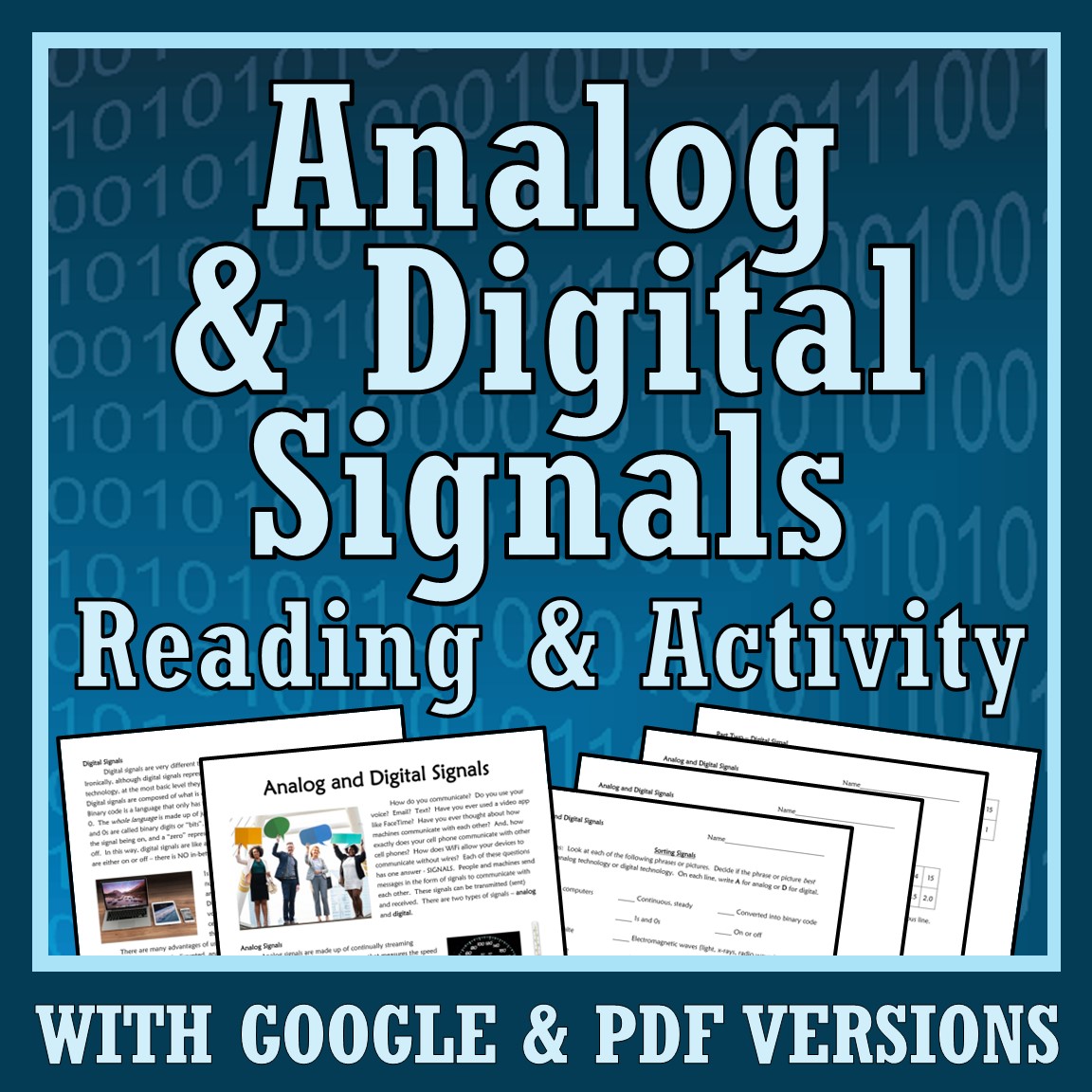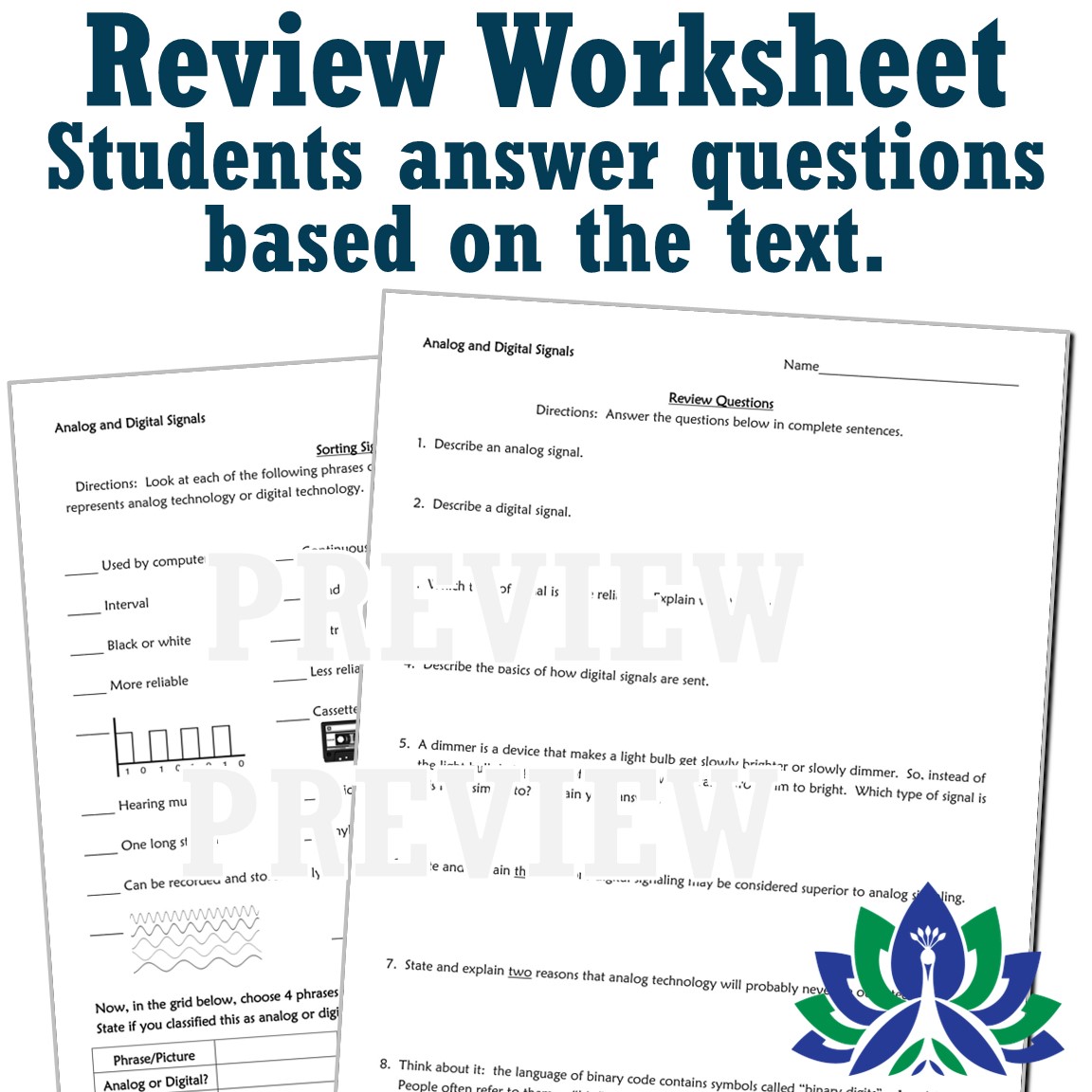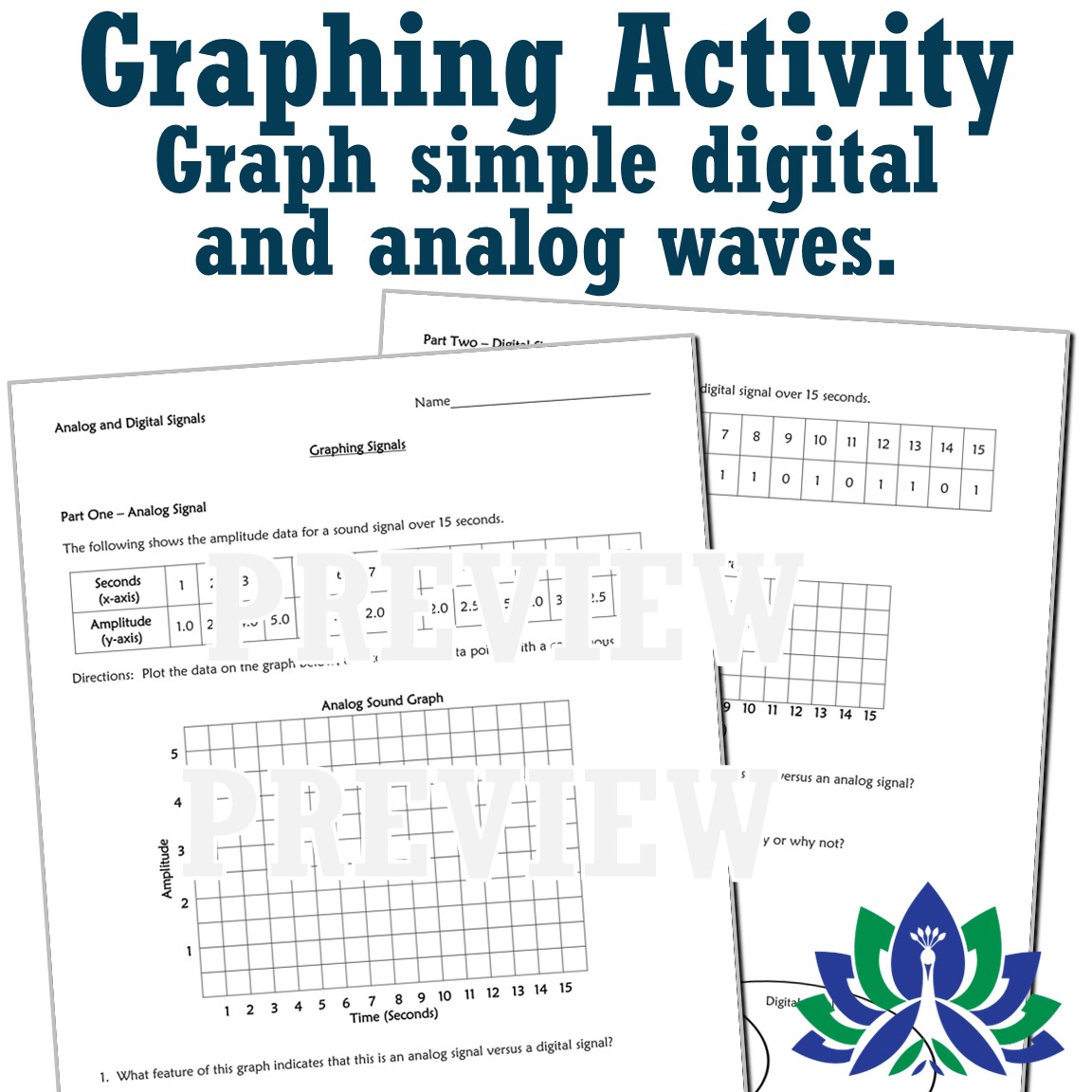Analog and Digital Signals Article, Worksheet, and Graphing
$4.75
Both PRINT and GOOGLE versions are included!
Grades 7 and Up
Designed with middle school students in mind, this activity simplifies NGSS MS-PS4-3 (waves and their applications in technologies) to essential understandings. After this lesson, students will be able to:
- differentiate between the basics of analog and digital signals
- compare the advantages and disadvantages (including reliability) of each
First, students READ the 2-page article. The reading is clear, straightforward, and written for a middle school audience. Topics include:
- Basics of analog and digital signals
- Devices that use each type of signal
- Advantages and disadvantages of each
Second, students ANSWER text-dependent and analysis questions based on the text.
Third, students GRAPH data points for an analog wave and data points for a digital wave. (The Google version of the activity does NOT include this graphing piece. this is only in the print version.) The graphing is very simple, designed not to be a challenging graphing activity but rather to highlight how the two signals graphs are different. A few analysis questions follow the graphs to bring students’ attention to the major characteristics of each wave type.
Check out our related waves resources:
- Analog & Digital Waves Assessment
- Use Analog Waves to “Send” Messages
- Waves Assessment Bundle
- Waves Worksheet
Teacher Notes:
- Please note: This resource is NOT editable.
- Answer key included.
- Check out more resources in the waves, sound, and light section of our shop!
You might also like...
Related products
-
Classifying Matter
Classification of Matter Unit: Elements, Compounds, and Mixtures
$30.00 Add to cart -
Natural vs. Synthetic Materials
Natural Resources and Synthetic Materials Impact on Society Test
$3.50 Add to cart









Reviews
There are no reviews yet.